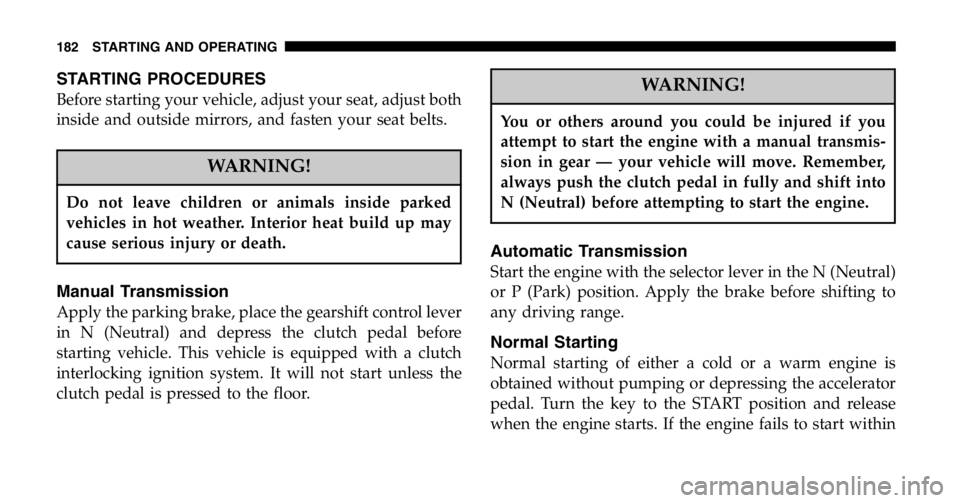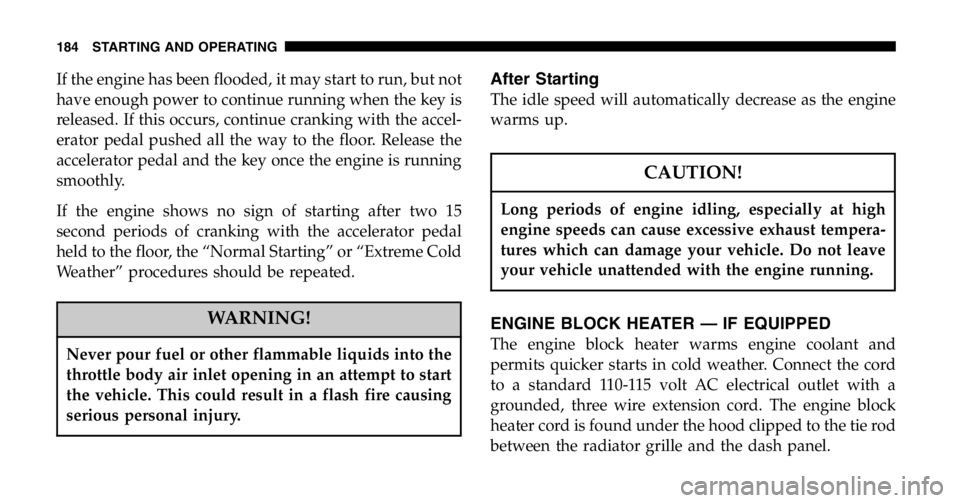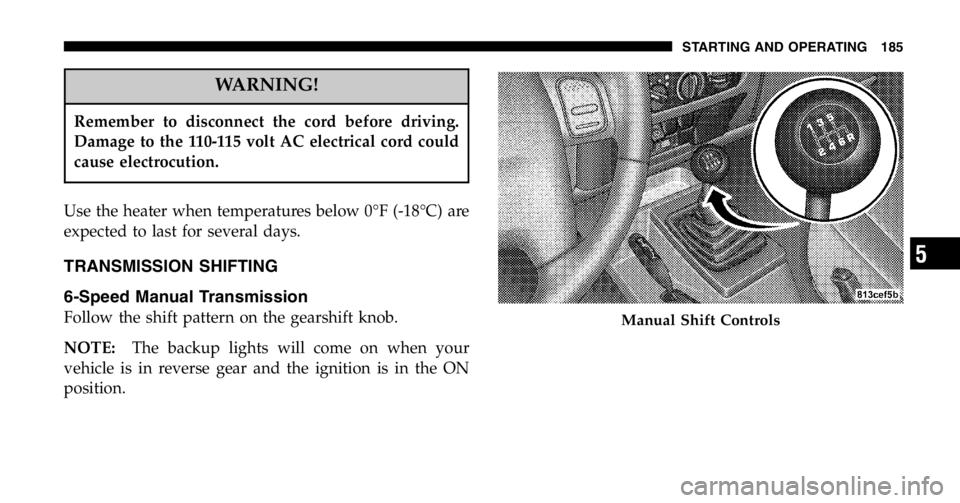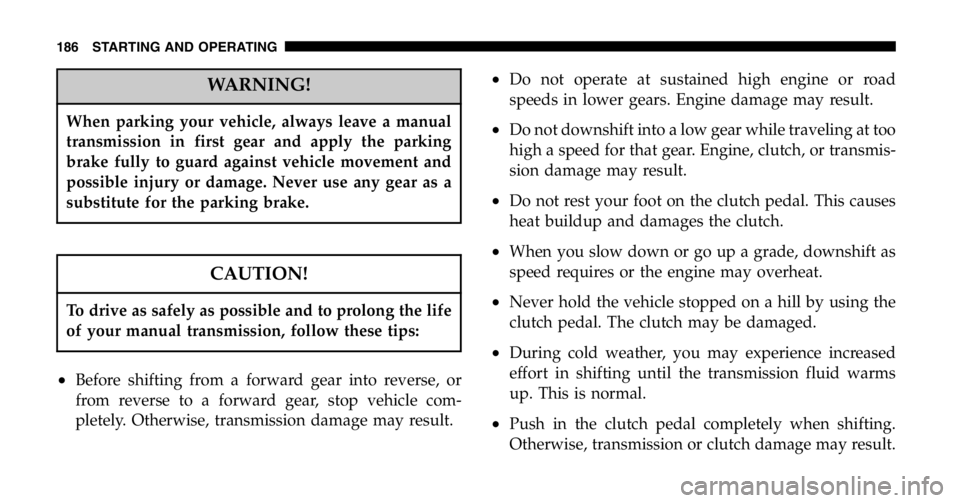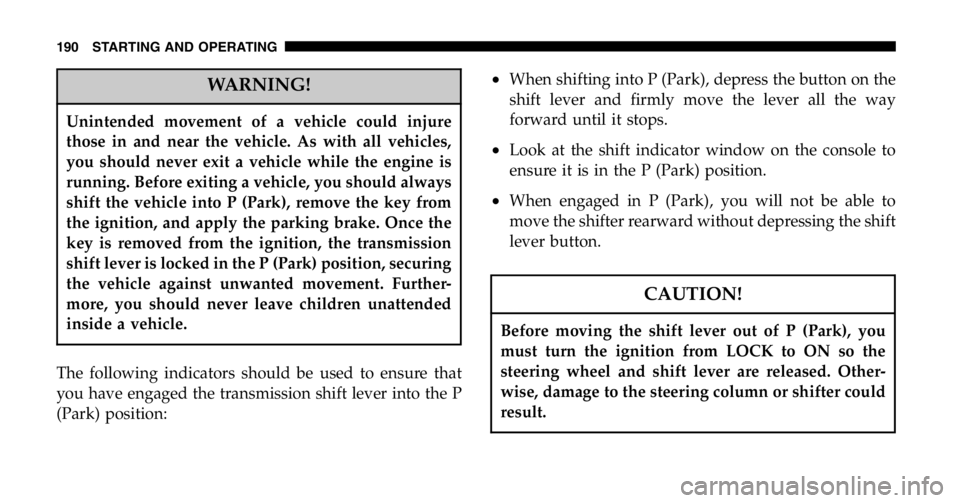Seat Belts And Pregnant Women
We recommend that pregnant women use seat belts
throughout their pregnancy. Keeping the mother safe is
the best way to keep the baby safe.
Pregnant women should wear the lap part of the belt
across the thighs and as snug across the hips as possible.
Keep the belt low so that it does not come across the
abdomen. That way the strong bones of the hips will take
the force if there is a collision.
Seat Belt Extender
If a seat belt is too short, even when fully extended and
when the adjustable upper shoulder belt anchorage (if
equipped) is in its lowest position, your dealer can
provide you with a seat belt extender. This extender
should be used only if the existing belt is not long
enough. When it is not required, remove the extender
and store it.
WARNING!
Using a seat belt extender when not needed can
increase the risk of injury in a collision. Only use
when the seat belt is not long enough when it is
worn low and snug, and in the recommended seating
positions. Remove and stow the seat belt extender
when not needed.
Do not put anything on or around the front airbag
covers or attempt to manually open them. You may
damage the airbags and you could be injured be-
cause the airbags are no longer functional. These
protective covers for the airbag cushions are de-
signed to open only when the airbags are inflating.
Front Airbag Components
THINGS TO KNOW BEFORE STARTING YOUR VEHICLE 27
2
Ignoring the “Airbag Warning Light” in your instru-
ment panel could mean you won’t have the airbags
to protect you in a collision. If the light does not
come on, stays on after you start the vehicle, or if it
comes on as you drive, have the airbag system
checked right away.
2
In a collision, an unrestrained child, even a tiny
baby, can become a missile inside the vehicle. The
force required to hold even an infant on your lap can
become so great that you could not hold the child, no
matter how strong you are. The child and others
could be badly injured. Any child riding in your
vehicle should be in a proper restraint for the child’s
size.
Infants and Small Children
There are different sizes and types of restraints for
children from newborn size to the child almost large
enough for an adult safety belt. Always check the child
seat owner’s manual to ensure that you have the right
seat for your child. Use the restraint that is correct for
your child.
•The rearward-facing infant carrier is for babies weigh-
ing up to about 20 lbs (9 kg), and one year old or more.
The infant restraint must NEVERbe used in the front
seat of a vehicle with a front passenger airbag unless
the airbag is turned off. An airbag deployment could
cause severe injury or death to infants in this position.
The infant carrier is held in the vehicle by the lap belt,
lap/shoulder belt, or the LATCH child restraint an-
chorage system.
•Children under one year of age should continue to ride
in a rear-facing infant seat, even if they weigh more
than 20 lbs (9 kg). A “convertible” child seat, one that
is designed to be used either rearward-facing or
forward-facing, should be used for children who are
too heavy for the infant carrier, but who are too young
to face forward in the vehicle.
•The forward-facing child seat is for children from
about 20–40 lbs (9–18 kg), and more than one year old.
THINGS TO KNOW BEFORE STARTING YOUR VEHICLE 35
2

